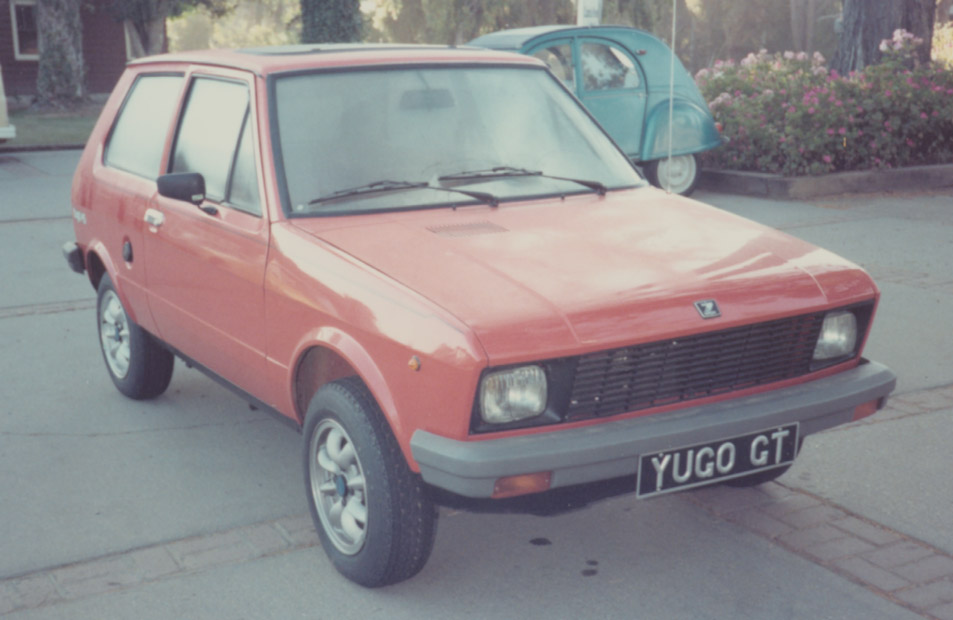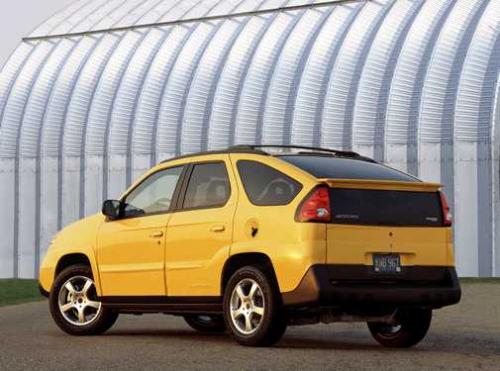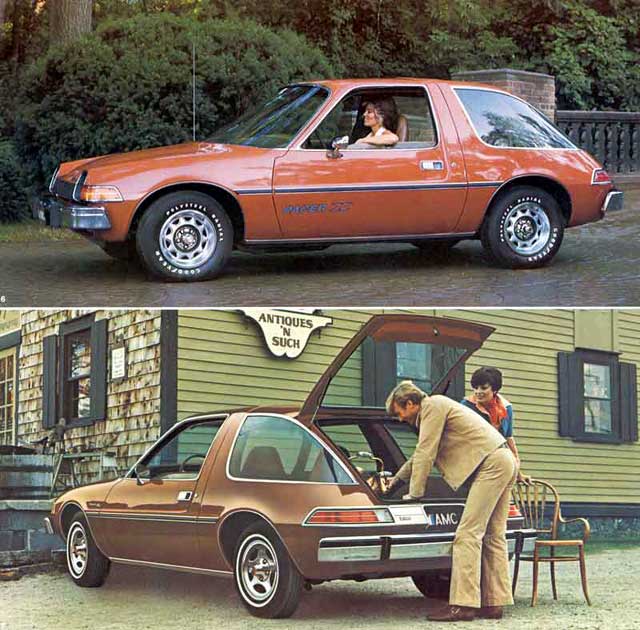Me dejo un poco intrigado la fealdad del el Mosler Consulier GTP y busque un poco del pedigree del carro
y me da mucha pereza traducirlo.. pero ahi va
(apesar de todo lo que dicen me parece mas que espantoso el carro)
http://www.allpar.com/cars/adopted/consulier-gtp.html
The Consulier GTP: Fastest Chrysler 2.2 Powered Car?
Back in the late 1980s, Warren Mosler, who had started a small car company named Consulier, noticed what most of the auto industry missed - the full potential of the 2.2 liter four-cylinders coming from Chrysler, which were to make the Dodge Spirit R/T America's fastest sedan (and perhaps its least well-known!). Consulier used the standard Turbo II version of the 2.2 liter engine powering K-cars, minivans, and Daytonas alike; in stock trim, that engine put out 174 horsepower at 5,200 rpm, but most Consuliers, being used for racing, were considerably tweaked, so that estimates range between 200 and 250 horsepower, with Consulier itself quoting 195 on its history page. A small number of Turbo III equipped cars were reportedly also built, again with tweaking to go beyond Chrysler’s 224 horsepower. (The Turbo III had distributorless ignition, dual overhead cams, and four valves per cylinder). Some Turbo IV parts were also apparently used (the Turbo IV was a moderately troublesome but innovative design with variable-sized nozzles).
As with the standard issue 2.2 turbos sold by Chrysler, the wheels were driven by an A-555 Getrag five-speed manual. Indeed, most of the powertrain parts were stock Chrysler pieces; the main difference was the chassis, which was designed for racing, and was made of fiberglass, Kevlar, and carbon fiber, with a steel front-suspension subframe and steel powertrain supports. The reason for using such space-age materials was, as you probably figured out, to save weight: the Consulier GTP weighed a mere 1,950 pounds. The weight bias was not quite the fabled 50/50 desired for handling, but the rear was actually heavier (66% of the weight), which helped traction during acceleration to the point where one could stand on the gas and get only slight wheelspin. The GTP had a mid-engine design, with an unusual, surprisingly-long radiator mounted in the back.
The two-seater had a short 100 inch wheelbase, though the overall length was surprisingly (given the wheelbase) long at 172 inches. Unlike any vehicle designed and sold by Chrysler in the US at that time (the Omni/Horizon being a notable, Europe-designed exception), the GTP had a fully independent suspension at all four wheels, designed by McKee Engineering. The disk brakes measured over 10 inches in both front and back; the rear brakes were borrowed from the Pontiac Fiero. Unlike any Chrysler Corporation car sold in 1990, the GTP had rear wheel drive.
The Consulier GTP was supposed to round up excellent performance figures, especially considering standards of the day, with Consulier quoting 0-60 in five seconds (in the following year, the 224 horse Spirit R/T was to be the fastest sedan sold in America, with a 0-60 in 5.8 seconds), but some sources hold that the GTPs used for racing were even faster. Braking from 65 took a mere 92 feet, and top speed was 155 mph, not unreasonable given the aerodynamics and weight; quarter-miles went by in the mid-13s. Gas mileage at highway speeds was supposed to be over 30 miles per gallon, again in keeping with the aerodynamics and weight, not to mention the relatively small engine for a supercar.
The Consulier GTP was reported to be very easy to drive very quickly, though one can also get into trouble very quickly with a patch of dirt or water; and the interior was surprisingly large. The dashboard provided full instrumentation, albeit in a plain/generic flat black panel, with eleven gauges (in two sizes).
Consulier GTPs were raced very successfully in IMSA supercar races, beating the likes of the Porsche 911 Turbo, Pontiac Firehawk, Saleen Mustang, Corvette ZR1, Lotus Espirt, Calloway Corvette, and Dodge Stealth. Indeed, Mosler offered a $100,000 bounty to anyone who could race a street-legal production car around any United States racetrack faster than Mosler’s racing driver could send a Consulier GTP through; no one was able to get that cash, though some said the conditions were not 100% fair. The Consulier GTP was eventually banned by the IMSA in 1991 —as the Mosler Automotive web site says:
After dominating local SCCA races and winning the 24 hours of Nelson Ledges in 1990, Mosler Automotive entered the IMSA Supercar World with 4 silver Consulier Series II GTP's debuting at Lime Rock in 1991 with pole position and a victory. At just 2100 lbs, this 5 speed, 2.2 liter turbo with about 195 hp easily outpaced the other, more powerful but heavier cars, including Hurley Haywood in a factory Porsche Turbo, Boris Said in a Callaway Twin Turbo Corvette, Stu Haynor in a Firebird, and Jim Minnaker in a factory ZR1 Corvette. It was subsequently announced by IMSA that it was not in the best interests of the series for Consulier to win at which time they added a 300 lb weight penalty and finally banned the Consulier GTP from the series. The GTP remains an exceptional sports car and can still outpace most of today's production cars.
The Consulier had standard air conditioning, Recaro seats, an Alpine stereo with CD player (still unusual then), power windows, and leather, and sold for about $62,000 in 1990 when it was introduced for retail sale. Much of the design work was done or sponsored by billionare Warren Mosler, using the Chrysler LeBaron GTS as a base. A number between 60 and 100 were apparently sold, many to Mosler himself or his companies. Warren Mosler eventually went on to making other vehicles, using Corvette engines, which added raw power, presumably at the expense of cornering and weight.
The Consulier GTP: Fastest Chrysler 2.2 Powered Car?
Back in the late 1980s, Warren Mosler, who had started a small car company named Consulier, noticed what most of the auto industry missed - the full potential of the 2.2 liter four-cylinders coming from Chrysler, which were to make the Dodge Spirit R/T America's fastest sedan (and perhaps its least well-known!). Consulier used the standard Turbo II version of the 2.2 liter engine powering K-cars, minivans, and Daytonas alike; in stock trim, that engine put out 174 horsepower at 5,200 rpm, but most Consuliers, being used for racing, were considerably tweaked, so that estimates range between 200 and 250 horsepower, with Consulier itself quoting 195 on its history page. A small number of Turbo III equipped cars were reportedly also built, again with tweaking to go beyond Chrysler’s 224 horsepower. (The Turbo III had distributorless ignition, dual overhead cams, and four valves per cylinder). Some Turbo IV parts were also apparently used (the Turbo IV was a moderately troublesome but innovative design with variable-sized nozzles).
As with the standard issue 2.2 turbos sold by Chrysler, the wheels were driven by an A-555 Getrag five-speed manual. Indeed, most of the powertrain parts were stock Chrysler pieces; the main difference was the chassis, which was designed for racing, and was made of fiberglass, Kevlar, and carbon fiber, with a steel front-suspension subframe and steel powertrain supports. The reason for using such space-age materials was, as you probably figured out, to save weight: the Consulier GTP weighed a mere 1,950 pounds. The weight bias was not quite the fabled 50/50 desired for handling, but the rear was actually heavier (66% of the weight), which helped traction during acceleration to the point where one could stand on the gas and get only slight wheelspin. The GTP had a mid-engine design, with an unusual, surprisingly-long radiator mounted in the back.
The two-seater had a short 100 inch wheelbase, though the overall length was surprisingly (given the wheelbase) long at 172 inches. Unlike any vehicle designed and sold by Chrysler in the US at that time (the Omni/Horizon being a notable, Europe-designed exception), the GTP had a fully independent suspension at all four wheels, designed by McKee Engineering. The disk brakes measured over 10 inches in both front and back; the rear brakes were borrowed from the Pontiac Fiero. Unlike any Chrysler Corporation car sold in 1990, the GTP had rear wheel drive.
The Consulier GTP was supposed to round up excellent performance figures, especially considering standards of the day, with Consulier quoting 0-60 in five seconds (in the following year, the 224 horse Spirit R/T was to be the fastest sedan sold in America, with a 0-60 in 5.8 seconds), but some sources hold that the GTPs used for racing were even faster. Braking from 65 took a mere 92 feet, and top speed was 155 mph, not unreasonable given the aerodynamics and weight; quarter-miles went by in the mid-13s. Gas mileage at highway speeds was supposed to be over 30 miles per gallon, again in keeping with the aerodynamics and weight, not to mention the relatively small engine for a supercar.
The Consulier GTP was reported to be very easy to drive very quickly, though one can also get into trouble very quickly with a patch of dirt or water; and the interior was surprisingly large. The dashboard provided full instrumentation, albeit in a plain/generic flat black panel, with eleven gauges (in two sizes).
Consulier GTPs were raced very successfully in IMSA supercar races, beating the likes of the Porsche 911 Turbo, Pontiac Firehawk, Saleen Mustang, Corvette ZR1, Lotus Espirt, Calloway Corvette, and Dodge Stealth. Indeed, Mosler offered a $100,000 bounty to anyone who could race a street-legal production car around any United States racetrack faster than Mosler’s racing driver could send a Consulier GTP through; no one was able to get that cash, though some said the conditions were not 100% fair. The Consulier GTP was eventually banned by the IMSA in 1991 —as the Mosler Automotive web site says:
After dominating local SCCA races and winning the 24 hours of Nelson Ledges in 1990, Mosler Automotive entered the IMSA Supercar World with 4 silver Consulier Series II GTP's debuting at Lime Rock in 1991 with pole position and a victory. At just 2100 lbs, this 5 speed, 2.2 liter turbo with about 195 hp easily outpaced the other, more powerful but heavier cars, including Hurley Haywood in a factory Porsche Turbo, Boris Said in a Callaway Twin Turbo Corvette, Stu Haynor in a Firebird, and Jim Minnaker in a factory ZR1 Corvette. It was subsequently announced by IMSA that it was not in the best interests of the series for Consulier to win at which time they added a 300 lb weight penalty and finally banned the Consulier GTP from the series. The GTP remains an exceptional sports car and can still outpace most of today's production cars.
The Consulier had standard air conditioning, Recaro seats, an Alpine stereo with CD player (still unusual then), power windows, and leather, and sold for about $62,000 in 1990 when it was introduced for retail sale. Much of the design work was done or sponsored by billionare Warren Mosler, using the Chrysler LeBaron GTS as a base. A number between 60 and 100 were apparently sold, many to Mosler himself or his companies. Warren Mosler eventually went on to making other vehicles, using Corvette engines, which added raw power, presumably at the expense of cornering and weight.


















